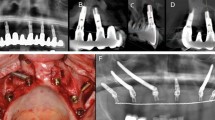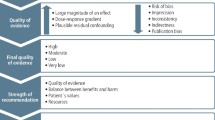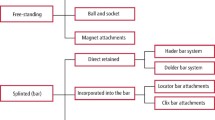Key Points
-
Risk factors associated with implant failure and complications need to be assessed for each patient individually.
-
A thorough evaluation of adjacent teeth and the mouth in general is required for proper treatment planning.
-
Damage to adjacent structures is avoidable but increasingly the subject of clinical negligence claims.
-
Practitioners should be adequately trained and follow the GDC guidelines.
Abstract
Patients have high expectations of dental implants in terms of appearance, function and longevity. It is essential that these expectations are realistically managed and that treatment of the highest standard is provided. This involves very careful evaluation, including clinical and radiographic, and presentation of the pros and cons of treatment alternatives. Provision of a successful implant restoration requires many skills including a surgical procedure to place the implant in the best possible position and prosthodontic techniques to provide an aesthetic restoration in occlusal harmony with the rest of the dentition. Recognition of risk factors and long-term maintenance requirements are equally important. Clinicians involved in these treatments must obtain adequate training and develop skills through treatment of straightforward cases using well established protocols before embarking on more demanding cases.
Similar content being viewed by others
Log in or create a free account to read this content
Gain free access to this article, as well as selected content from this journal and more on nature.com
or
References
Dental Protection Ltd. Position statement: mentoring. London: Dental Protection Ltd, 2008. http://www.dentalprotection.org/uk/news/positionstatements/mentoring (accessed 30 March 2010).
Acknowledgements
Thanks to the editor of the series Len D'Cruz who contributed to the section on Mentoring. Some of this material has previously appeared in 'A Clinical Guide to Implants in Dentistry' BDJ Books 2008.
Author information
Authors and Affiliations
Corresponding author
Additional information
Refereed paper
Rights and permissions
About this article
Cite this article
Palmer, R. Risk management in clinical practice. Part 9. Dental implants. Br Dent J 209, 499–506 (2010). https://doi.org/10.1038/sj.bdj.2010.1033
Accepted:
Published:
Issue date:
DOI: https://doi.org/10.1038/sj.bdj.2010.1033
This article is cited by
-
Differentiating success from survival in modern implantology – key considerations for case selection, predicting complications and obtaining consent
British Dental Journal (2016)
-
The management of traumatic tooth loss with dental implants: Part 1
British Dental Journal (2014)



